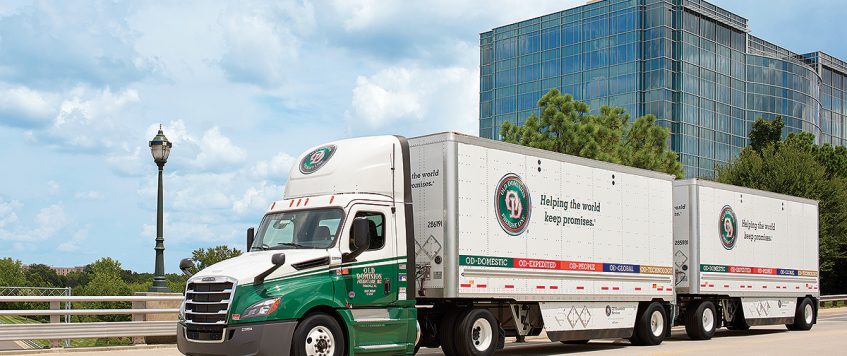-
19
Apr
Industrial Demand Gassing up US LTL Market
A marked increase in US manufacturing activity in the first quarter indicates more freight will hit the highway this year than in 2021, countering fears of a sharp downturn in overall demand for the US trucking market. US retail sales, the other primary driver of over-the-road freight volumes, may decline from last year’s record-setting pace, but are likely to remain above pre-pandemic levels.
The US Federal Reserve’s index measuring total US industrial production rose 0.9 percent in March from February and 5.5 percent year over year, the Federal Reserve announced Friday. The index reading for February was up a revised 0.9 percent from January, following a 1 percent increase in January from December.
“There’s a lot of demand backlog in manufacturing that’s going to support manufacturing activity throughout the year,” Jason Miller, associate professor of logistics at Michigan State University, told JOC.com Monday. “I’m less concerned about freight volumes than I was” prior to the Fed’s latest industrial production index data.
Trucking companies are working to capture that industrial demand. XPO Logistics, for example, plans to open a 51,500-square-foot terminal with 99 doors and a freight assembly facility this month in Adelanto, California, in the High Desert region east of Los Angeles, partly to capture the output of increased manufacturing.
“In California, demand is on the rise from manufacturing and retail expansion in the High Desert area,” Mario Harik, acting president of less-than-truckload (LTL) and chief information officer for XPO Logistics, said in a statement Monday. XPO is also opening a new 97-door terminal in Conley, Georgia, in May.
“We’re making strategic investments to optimize our network for the long-term,” Harik said.
Manufacturing’s strength is boosting LTL demand even as spot market truckload volumes and rates slip. Industrial freight historically represents the core of LTL shipments, although retail has made big inroads into LTL.
That’s true for the trucking market overall, Miller said. He points out that manufacturing accounts for the majority of truck tonnage, although that majority has been narrowing. Data from the last US five-year Commodity Flow Survey (CFS) in 2017 pegged manufacturing’s share of for-hire truck tonnage at about 58 percent. That was before the e-commerce explosion during the COVID-19 pandemic. The 2022 CFS survey, when available from the US Census Bureau, may reflect more of an equilibrium between manufacturing and retail and trade.
Increased activity, inventories
The manufacturing uptick noted by the Federal Reserve is also reflected in IHS Markit’s Sector Purchasing Managers Index (PMI), which collects data from purchasing managers in seven manufacturing and services sectors. All seven sectors registered an increase in business activity in March, the first time that’s happened this year.
Healthcare, technology, consumer services, and basic materials grew fastest, followed by financials, industrials, and consumer goods production. Supply chain disruptions continue to hamper production, according to IHS Markit, the parent company of JOC.com.
Inventories also continue to rise, but retail inventory-to-sales ratios remain at historic lows. Seasonally adjusted retail inventories rose 7.3 percent year over year in February, but the retail inventory-to-sales ratio dropped 0.1 percentage points year over year to 1.13, meaning goods moved off shelves faster.
February’s data comparison is made difficult by the extreme winter weather that disrupted economic activity in February 2021, preventing a buildup of inventory and the sale of goods. But the longer trend still points to larger inventories and faster sales, requiring faster replenishment and production.
In fact, consumer goods production, including the production of durables such as household appliances, increased in March, rising 1.4 percent from February and 3 percent year over year, according to the Federal Reserve. That’s despite predictions consumer spending on durables would decline.
On a month-over-month basis, the production of durable goods rose 3.9 percent in March, while production of automotive products increased 7.2 percent. That indicates people still plan to buy more durables and cars and trucks, and that supply problems preventing production are being resolved.
“We have seen some sectors, such as miscellaneous durable goods and machinery, exceed their 2018 highs,” said Miller, pointing to strong demand for new housing, which in turn drives continued demand for all the goods needed in new houses — e.g., washers, dryers, refrigerators, electronics, and more.
Even if sales in some sectors slip below 2021 levels, they will likely remain well above pre-pandemic 2019 levels, even adjusted for inflation. “Real retail sales for furniture and home furnishings fell from last year in March, but last year was at a stupid high because of stimulus money,” Miller said.
“Year over year, sales were down about 7 percent for furnishings and home furniture stores, but compared to 2019, sales were up 14.8 percent, removing inflation,” he said. “They’re still selling more product than they were in 2019.” And that means continued demand for trucks and trailers.
By: William B Cassidy / JOC

